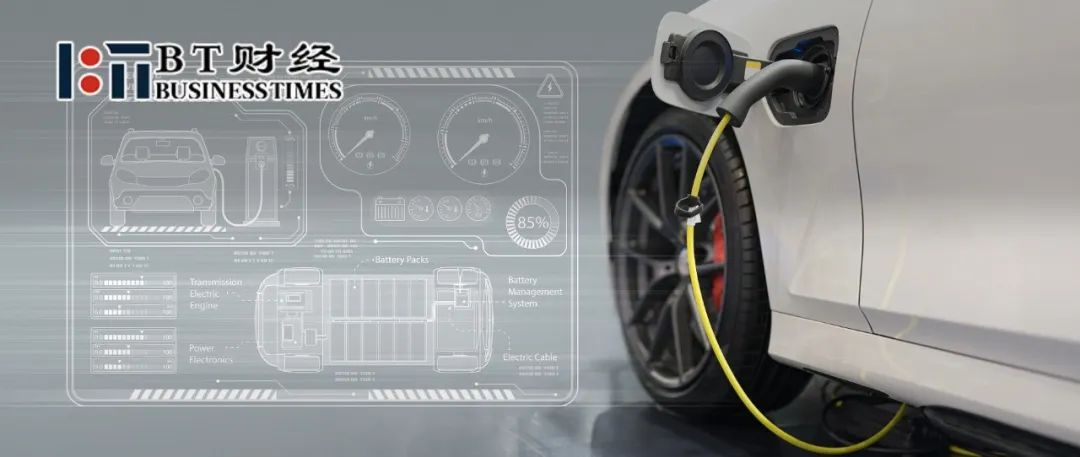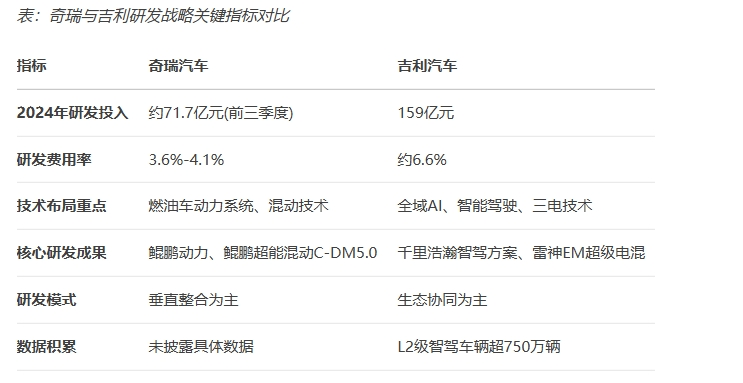Chery and Geely Reconcile, Each with Unique Strategies for New Energy Transition
![]() 05/16 2025
05/16 2025
![]() 632
632

Author | Yuan Fang
Learn more financial information | BT Finance Data Hub
Article Length: 3,409 words, Estimated Reading Time: 9 minutes
The development strategies of Chery and Geely serve as distinct examples of how traditional automakers are transforming.
Recently, Yao Fei, Deputy General Manager of Chery Automobile Marketing Company (social media ID: Yao Yuanfang), made inappropriate comments about Geely Galaxy Xingyao 8 in the "A9 Founder Edition Owners Group" on Chery Fengyun, sparking concern.
On May 12, in response to this incident, Li Xueyong, Executive Vice President of Chery Automobile Co., Ltd., posted on Weibo that recently, one of Chery's brand executives made inappropriate remarks about a competitor's product. Such remarks are unacceptable and strictly prohibited by Chery, violating Article 3 of the company's "Notice on Strictly Enforcing the Requirements for Public Speaking and Media Interview Activities": "Maintain a humble and open attitude, and refrain from comparisons that belittle others. Approach competitors and partners with humility and a learning mindset." We take this matter seriously and have taken immediate disciplinary action against the responsible individual, suspending all their work. Simultaneously, I have had in-depth communications with Geely's Xue Liang, and we both agree that Chinese automakers should jointly maintain a healthy and transparent industry atmosphere, learn from each other, and collaborate to propel the continuous upward development of Chinese automotive brands.
Yang Xueliang, Senior Vice President of Geely, also responded in a post: "I have discussed the controversy caused by individual employee remarks with Chery's senior management. Chery has demonstrated integrity and responsibility, and the matter has been resolved appropriately." Yang Xueliang confirmed that the matter has been handled properly and that this chapter has been closed.
Some media outlets have noticed that Yao Fei has since disbanded the "A9 Founder Edition Owners Group" and set his Douyin account to private. Now that this matter has been resolved, let's delve into Chery and Geely's R&D and sales situations.
1
Which Has Stronger R&D Capabilities?
As a key indicator of a company's innovation prowess, R&D investment reveals distinct paths for Chery and Geely.
According to public financial reports, Geely's R&D investment reached 15.9 billion yuan in 2024, a 13% year-on-year increase, with an R&D expense ratio of approximately 6.6%. This investment scale ranks among the top in China's independent brand automakers. Notably, Geely's R&D investment has shown accelerated growth over the past four years, with investments of 1.292 billion yuan, 1.966 billion yuan, and 3.361 billion yuan in 2021-2023, respectively, surging to 10.419 billion yuan in 2024, marking a year-on-year increase of over 200%. This explosive growth underscores Geely's firm commitment to new energy and intelligent transformation.
In contrast, Chery's R&D investment appears relatively conservative. Prospectus data shows that Chery's R&D expenses were 3.646 billion yuan, 6.664 billion yuan, and 6.553 billion yuan in 2022, 2023, and the first three quarters of 2024, respectively, with an R&D expense ratio maintained between 3.6%-4.1%. This ratio is not only lower than Geely's but also lags significantly behind leading automakers like BYD. In absolute terms, Chery's cumulative R&D investment over the past three years was approximately 16.8 billion yuan, which is still a substantial investment.
In terms of technological strategic layout, Chery and Geely exhibit marked differences, reflecting their distinct judgments on the transformation trends of the automotive industry and their respective utilization of corporate resource endowments.
Chery has adopted a dual-track strategy of "deepening gasoline vehicle technology + gradual new energy transition". In the traditional gasoline vehicle sector, Chery continues to strengthen its independent R&D advantages. Its 2.0TGDI Kunpeng engine + Kunpeng 8AT powertrain combination is entirely self-developed, having won the prestigious "China Heart" award 11 times. This technological accumulation supports Chery's strong performance in the overseas gasoline vehicle market – in 2024, gasoline vehicles contributed 74.8% of revenue, with a gross profit margin of 18%, far exceeding the industry average.
In the new energy sector, although Chery started relatively late, it has achieved rapid catch-up through Kunpeng Super Hybrid C-DM5.0 technology (with a thermal efficiency of 48%). In 2024, new energy sales surged 232% year-on-year to 583,600 vehicles. However, Chery's intelligent layout is relatively lagging, with Yin Tongyue only clearly stating the slogan "Intelligentization will not be polite" in 2024. Intelligent driving functions such as high-speed NOA and urban NOA are still in the catching-up phase.
In contrast, Geely has constructed a more comprehensive new energy and intelligent technology matrix. In terms of electrification, Geely has launched core technologies such as the GEA new energy architecture, Leishen EM super hybrid, and Shendun Golden Brick Blade Battery, forming a comprehensive three-electric technology system. In the field of intelligence, Geely claims to be "the only automaker in the world to complete a global AI intelligence layout," with its technology map spanning multiple dimensions including intelligent computing centers, operating systems, intelligent cabins, autonomous driving, and satellite internet. The unified intelligent driving solution "Qianli Haohan" launched in March 2025 releases technological dividends through five gradients from H1 to H9, avoiding technological overcapacity while sharing costs through economies of scale. Geely has also established the Xingrui Intelligent Computing Center 2.0 with a comprehensive computing power of 23.5 EFLOPS, ranking first among Chinese automakers, providing robust computing power support for AI large model training.

The two companies also differ in their R&D organizational models. Chery tends to favor a vertically integrated independent R&D path, as evidenced by its "Yao Guang 2025" strategic plan, which invests over 100 billion yuan in core technology research and development within five years, covering 19 fields such as platform architecture, chips, and hydrogen energy. In contrast, Geely places more emphasis on ecological collaboration, accelerating technological iteration through the formation of the "Intelligent Automobile Computing Power Alliance" with partners like Jieyue Xingchen and Qianli Technology, as well as deep integration with AI enterprises such as DeepSeek. This open and cooperative R&D model may yield higher innovation efficiency for Geely.
2
Who is Thriving More in the New Energy Era?
The differences in R&D strategies are directly reflected in the market performance and financial results of the two companies, presenting development trends with their own strengths and weaknesses.
Chery's strategy of deepening technology has yielded considerable returns in the overseas market. In 2024, Chery's overseas sales reached 1.1446 million vehicles, ranking first in Chinese brand passenger car exports for 22 consecutive years. This success largely stems from its precise understanding of the demand for gasoline vehicles in emerging markets – through the "same price for oil and electricity" strategy, the Tiggo series achieves an 18% market share in the Russian market with L2-level intelligent driving at a pricing of 100,000 yuan, surpassing international brands such as Hyundai and Honda.
Chery has established a three-dimensional network covering R&D, production, and sales overseas, with its first European vehicle production base in Barcelona and an 80% localization rate at its Latin American plant. This "technology for market" model has propelled Chery's 2024 revenue to 480 billion yuan, with significant contributions from overseas markets.
However, Chery's insufficient R&D investment may hinder its high-end development and new energy transition. In the first three quarters of 2024, Chery's new energy revenue accounted for only 16%, in stark contrast to the domestic new energy vehicle penetration rate of over 50%. Although the intelligent S7, a collaboration with Huawei and equipped with the HarmonyOS 4.0 system, aims to achieve overtaking in the intelligent racetrack, its sales volume is still significantly lower than that of BYD. In the prospectus, Chery also admits that "there is no guarantee that it can keep up with the rapidly changing automotive market," which may reflect its concerns about the speed of technological iteration.
In contrast, Geely's high R&D investment is translating into comprehensive competitiveness enhancement. In 2024, Geely's new energy sales reached 888,000 vehicles, a 92% year-on-year increase, with penetration increasing to 40.8%, and achieving full profitability in the new energy business from the second half of the year. This success stems from Geely's clear "oil-electricity-intelligence" strategy – not only promoting "parity between oil and electricity" but also emphasizing the synchronous development of gasoline and new energy vehicles in intelligence. Geely's high R&D efficiency also benefits from its large-scale data advantage: possessing 7.5 million vehicles equipped with L2-level and above intelligent driving capabilities, with a cumulative actual driving data of 10 billion kilometers, providing abundant material for AI training.
The profitability differences between the two companies are also noteworthy. Chery's net profit in the first three quarters of 2024 reached 11.312 billion yuan, with a gross profit margin of 14.8%; whereas Geely's net profit attributable to shareholders in 2024 was 16.6 billion yuan, with a gross profit margin of 15.9%. Considering Geely's higher R&D investment and more balanced business structure (with nearly 50% in new energy), its profitability may be more sustainable. In particular, Geely's new energy segment has achieved profitability, breaking free from the common industry dilemma of "losing money on selling electric vehicles." Chery's success in overseas markets has also found a second growth curve for itself, adding more weight to the sustainability of its excellent performance.
Furthermore, both companies need to address the industry-wide issue of competing for R&D talent. Chery plans to "activate the equity incentive mechanism" through its Hong Kong IPO; while Geely retains core talent through the "Talent Forest" strategy and long-term incentive plans for options. Talent reserves in cutting-edge areas such as large AI models will increasingly become the key to competition.
Innovation in R&D cooperation models is also worth exploring. Chery's "Kaiyang Laboratory" attempts to gather global resources through an open innovation platform to overcome "choking point" technologies; whereas Geely's "Intelligent Automobile Computing Power Alliance" has created a new model of shared computing power among automakers. Such collaborative R&D may become an important way to reduce costs and increase efficiency in the future.
3
Examples of Traditional Automaker Transformation on Different Paths
The comparison of Chery and Geely's R&D strategies reveals the diverse paths of China's automotive industry transformation and upgrading. Chery represents the development model of "gradual transition from gasoline vehicle advantages to new energy," with its success built on deep gasoline vehicle technology accumulation and precise understanding of overseas markets. On the other hand, Geely demonstrates the transformation path of "fully embracing intelligent electrification," constructing a future-oriented technology system through high-intensity R&D investment.
From a capital market perspective, Geely's high R&D investment is translating into technological and market advantages, forming a virtuous cycle of "R&D investment - technological breakthrough - market growth - capital premium." Chery's performance in overseas markets is impressive, and the overseas markets secured through technological advantages are translating into sales advantages. However, Chery needs to continue to invest in R&D, which may be a significant reason for its push to complete the Hong Kong IPO.
For China's automotive industry as a whole, both R&D models have their values and limitations. Chery's pragmatic strategy proves that traditional technology can still create enormous value in a globalized market. Geely's comprehensive transformation demonstrates the importance of seizing technological commanding heights. As Chery completes its IPO and Geely concludes its "Intelligent Geely 2025" strategy, the R&D competition between the two companies will enter a new stage, and the lessons learned from their different paths will provide valuable references for the high-quality development of China's automotive industry.
In the ever-evolving automotive industry, there is no one-size-fits-all R&D strategy. Only continuous innovation and technological investment closely aligned with market demand can help Chinese automakers gain long-term advantages in global competition. The diverse explorations of Chery and Geely collectively paint a rich picture of technological innovation in China's automotive industry.
This article is an original article of BT Finance. Unauthorized use, copying, dissemination, or adaptation of this article is not allowed. Infringement will result in legal action.








